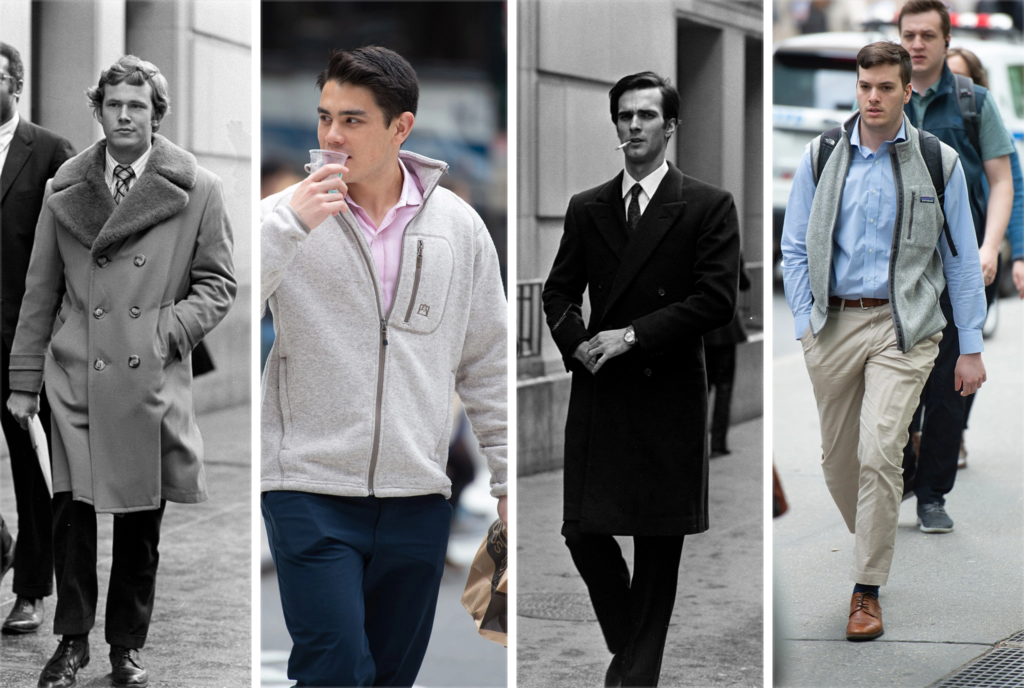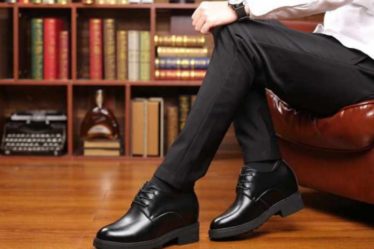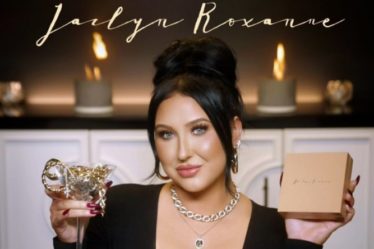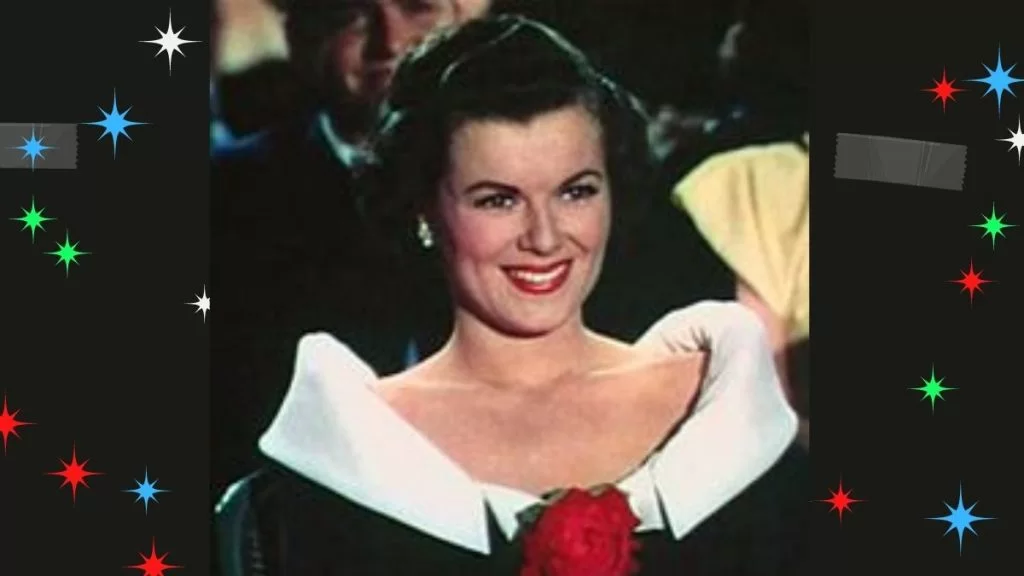
Wall Street Fashion, the bustling financial hub of New York City, is not only renowned for its economic prowess but also for its significant influence on fashion. The world of high finance has long been associated with polished and professional attire, with Wall Street professionals setting the tone for business fashion. The way individuals working in the finance industry present themselves through their clothing has become a symbol of power, success, and authority.
Dressing well in finance is crucial. From Wall Street’s early days to the present, fashion has shaped finance professionals’ image and identity. The attire choices of those working in the industry have evolved alongside societal shifts, cultural changes, and emerging trends.
Wall Street clothes has a fascinating history. We’ll explore Wall Street’s fashion history and the legendary personalities who shaped it. We will uncover the phenomenon of the power suit, its significance in projecting authority and confidence, and how it has evolved over the decades.
Moreover, we will discuss the transformation of dress codes within the finance industry, breaking the mold of traditional business attire. The rise of business casual and smart casual styles, fueled by technological advancements and the influence of startup culture, has revolutionized the way professionals on Wall Street dress. We will examine how street style influences have permeated the finance sector, leading to the fusion of classic and contemporary elements in fashion choices.
Additionally, we will explore the role of accessories and footwear in Wall Street fashion, highlighting the significance of luxury watches, jewelry, and carefully chosen shoes in completing a polished look. We’ll teach men and women how to dress for success in finance while expressing their individuality.
This essay will also discuss sustainable fashion’s growing role in finance and how fashion may fight gender stereotypes in the industry. Fashion’s psychological impact on confidence, self-perception, and career success will also be discussed.
Lastly, we will examine the future of Wall Street fashion, forecasting upcoming trends and innovations in wearable technology. We will explore international perspectives on finance fashion, acknowledging the cultural differences and global influences that shape attire choices around the world.
We seek to inspire finance professionals to embrace their personal style and succeed in their jobs by exploring Wall Street fashion. Explore Wall Street fashion and its lasting legacy with us.
The Origins of Wall Street Fashion

New York City’s early finance industry gave rise to Wall Street fashion. Finance professionals developed a style that reflected their status and position as Wall Street became a hub of economic activity. In the early years, the influence of traditional menswear played a significant role in shaping Wall Street fashion. The emphasis was on tailored suits, crisp shirts, and polished shoes, exuding a sense of professionalism and authority.
As women began to enter the finance sector, the evolution of Wall Street fashion took on new dimensions. Women’s fashion in the industry initially emulated the masculine styles prevalent at the time. However, over the years, women in finance have embraced their own unique fashion choices, blending femininity with professionalism. They have challenged gender norms by introducing tailored suits, sophisticated dresses, and stylish accessories that project confidence and success.
Key fashion icons emerged along the way, leaving an indelible mark on Wall Street fashion. These individuals, through their impeccable style and flair, set trends and influenced the fashion choices of their peers. Their iconic looks became synonymous with success and power. Their influence extended beyond the finance industry, shaping the broader world of fashion.
The origins of Wall Street fashion lay the foundation for the sartorial landscape that exists today. It is a testament to the significance of clothing and personal presentation in the world of high finance. The fashion choices made by professionals on Wall Street not only reflect their individual tastes but also convey their authority, competence, and ambition. It is a visual language that communicates professionalism and sets the tone for business attire in the finance industry.
The Power Suit Phenomenon

The power suit phenomenon is a distinctive aspect of Wall Street fashion that has left an enduring impact on the business world. The power suit, characterized by its impeccably tailored design and strong silhouette, became a symbol of authority, confidence, and professionalism. It emerged as a response to the need for finance professionals to project a commanding presence in the corporate realm. The power suit’s popularity soared during the 1980s when it became synonymous with the booming finance industry and the era of “greed is good.”
Over the decades, the power suit has undergone transformations, adapting to shifting fashion trends and societal norms. While the classic power suit was typically associated with a monochromatic color palette and structured shoulder pads, contemporary variations have embraced more diversity in colors, patterns, and cuts. The focus has shifted towards versatility, allowing individuals to express their personal style while maintaining a professional appearance.
The power suit phenomenon extends beyond mere clothing. It encompasses an attitude, an aura of confidence and authority that is exuded when wearing such attire. The power suit has the ability to boost one’s self-assurance and command respect in professional settings. It continues to be a powerful tool for professionals in the finance industry, providing a visual language of success and ambition in the competitive world of Wall Street.
Breaking the Mold: Challenging Dress Codes
Shift towards more casual attire in Wall Street:
In recent years, there has been a noticeable shift towards more casual attire on Wall Street. Gone are the days of strict dress codes dictating formal business attire. Finance professionals are embracing a more relaxed approach to dressing, seeking comfort and flexibility without compromising professionalism. This shift can be attributed to various factors, including changing societal norms, generational preferences, and a desire for work-life balance.

Introduction of business casual and smart casual styles:
The introduction of business casual and smart casual styles has contributed to a more flexible dress code. Business casual clothes lets people exhibit their personal flair while looking polished. Wall Street professionals can choose smart casual, which is a mix of casual and formal.
Impact of technology and startup culture on fashion norms:
The influence of technology and the rise of startup culture have also had a profound impact on fashion norms in the finance industry. As technology companies and startups have disrupted traditional industries, including finance, their more relaxed and innovative approach to work has permeated the fashion choices of finance professionals. The emphasis is now on comfort, functionality, and self-expression, as seen in the incorporation of tech-friendly fabrics, athleisure-inspired pieces, and a more individualistic sense of style.
Wall Street Style: A New Era
Emergence of street style influences on Wall Street fashion:
In recent years, there has been a notable emergence of street style influences within Wall Street fashion. Street style, which originated from urban youth culture, has made its way into the finance sector, bringing a fresh and contemporary vibe to traditional business attire. This shift represents a departure from the strictly formal and conservative looks of the past, as finance professionals embrace elements of street fashion to express their individuality and stay current with the evolving fashion landscape.
Fusion of classic and contemporary elements:
The fusion of classic and contemporary elements is a defining characteristic of the new era of Wall Street street style. It blends timeless sartorial choices with modern and unconventional touches. Finance professionals are combining traditional business staples, such as tailored suits and blazers, with unexpected accessories, bold patterns, and statement pieces. This fusion allows for a unique and personalized approach to dressing, reflecting both professionalism and a sense of fashion-forwardness.
Role of social media in shaping street style trends:
Social media has played a significant role in shaping street style trends on Wall Street. Platforms like Instagram and LinkedIn have become channels for finance professionals to showcase their personal style, share fashion inspiration, and connect with like-minded individuals. Influencers and fashion bloggers within the finance industry have emerged, showcasing their unique street style looks and providing inspiration for others. The instant accessibility of fashion trends through social media has accelerated the adoption of street style elements within Wall Street fashion.
Iconic Accessories and Footwear
Iconic accessories and footwear play a crucial role in completing the polished and sophisticated look of Wall Street fashion. Luxury watches and jewelry, in particular, have long been associated with the finance industry, symbolizing success, status, and attention to detail. Finance professionals often opt for elegant timepieces and subtle yet refined pieces of jewelry that convey a sense of refinement and taste. These accessories serve as subtle yet impactful statements of style and achievement.

Additionally, footwear choices hold significant importance in Wall Street fashion. Professionals in the finance industry often opt for well-crafted leather shoes that exude professionalism and attention to detail. Classic styles such as oxfords, loafers, and brogues are popular choices, as they seamlessly blend style and sophistication. These timeless footwear options complement the tailored suits and business attire commonly seen on Wall Street, elevating the overall look and adding a touch of elegance.
Investment in high-quality accessories and footwear is considered a wise choice in the finance sector, as they are seen as valuable assets that enhance one’s professional image. By carefully selecting and pairing iconic accessories and footwear, finance professionals can make a lasting impression, exuding confidence and attention to detail in their overall appearance.
Dressing for Success: Tips for Men
Building a professional and polished wardrobe is essential for men working in the finance industry. In this section, we will provide helpful tips and guidelines for men to dress for success. From essential wardrobe staples to tailoring and fit guidelines, grooming and personal presentation tips, and embracing personal style, these insights will help men navigate the world of finance fashion with confidence and style. Let’s dive into the key aspects of dressing for success as a man in the finance industry.
Essential wardrobe staples for men in finance:
Building a well-rounded wardrobe is essential for men working in the finance industry. Investing in timeless wardrobe staples ensures versatility and a polished appearance. Key pieces for men in finance include tailored suits in classic colors like navy, charcoal, and gray, along with dress shirts in neutral tones and a selection of high-quality ties. Additionally, a range of dress shoes, including oxfords and loafers, is crucial, along with a collection of versatile accessories such as belts and pocket squares.
Tailoring and fit guidelines:
Proper tailoring and fit are paramount in achieving a sharp and professional look. Men in finance should prioritize getting their garments professionally tailored to ensure a precise fit. Jackets and trousers should be well-fitted but not overly tight, while shirts should be slim-fitting without being restrictive. Pay attention to sleeve and pant lengths, ensuring they are tailored to the appropriate measurements. A well-tailored outfit creates a streamlined and sophisticated silhouette.
Grooming and personal presentation tips:
Grooming and personal presentation play a significant role in projecting a professional image. Men in finance should maintain well-groomed hair, trimmed facial hair (if applicable), and neatly manicured nails. Attention to personal hygiene is crucial, including daily showers, fresh breath, and proper grooming of eyebrows and ear hair. A polished appearance extends to well-maintained shoes, ironed clothing, and the absence of wrinkles or stains. Keeping a clean and professional appearance demonstrates attention to detail and self-care.
Style and self-expression:
While professionalism is key, incorporating personal style and self-expression within the boundaries of formal attire is encouraged. Men in finance can add subtle touches of individuality through accessories like watches, cufflinks, and tie clips. Experimenting with patterns and textures within the confines of a conservative dress code allows for a unique and confident style. Embracing a signature accessory or incorporating a pop of color can add a touch of personality without compromising professionalism.
Empowering Women in Finance: Fashion Tips

In the world of finance, empowering women to express their personal style while maintaining professionalism is crucial. In this section, we will provide valuable fashion tips for women in the finance industry. From key wardrobe pieces to balancing professionalism and personal style, and embracing femininity while projecting authority, these insights will help women navigate the realm of finance fashion with confidence and flair. Let’s explore the empowering fashion tips for women in finance.
Key pieces for women in the finance industry
Building a versatile wardrobe is essential for women in finance. Key pieces include tailored suits in classic cuts and neutral colors, such as navy, black, or gray. Additionally, well-fitted blouses and dress shirts, paired with tailored trousers or skirts, create a polished and professional look. Investing in quality accessories, such as statement jewelry and elegant watches, can elevate the overall outfit. By curating a collection of timeless wardrobe staples, women in finance can project confidence and style.
Navigating the balance between professionalism and personal style
Finding the balance between professionalism and personal style is important for women in finance. While adhering to the industry’s dress code, incorporating personal touches allows women to showcase their individuality. Experimenting with color, patterns, and textures within professional boundaries can add a stylish flair. Mixing and matching separates and playing with accessories offer opportunities to express personal style while maintaining a professional image. It’s about finding the right balance that allows women to feel confident and authentic in their attire.
Embracing femininity while maintaining authority
Embracing femininity is empowering for women in finance, as it allows them to express their unique identity while maintaining authority. Women can incorporate feminine elements into their attire through subtle touches, such as delicate jewelry, a pop of color, or a well-fitted dress. Attention to fit and tailoring is crucial to ensure a professional and polished appearance. By embracing femininity, women can project confidence, strength, and individuality in the male-dominated finance industry.
Dress Codes: Navigating the Dos and Don’ts
Finance workers must understand dress codes like everyone else. Knowing dress guidelines helps employees look polished and professional. Follow the company or industry’s dos. This includes formal apparel including suits, shirts, and shoes. Dress appropriately for client meetings, presentations, and business events. Grooming, cleanliness, and personal hygiene are essential.
However, people should avoid some things. Avoid dressing too casually or revealingly to avoid appearing unprofessional. Avoid clothing with logos or slogans. It’s important to blend personal style with professional clothes to ensure workplace respect.
Finance professionals can impress clients and coworkers by following dress guidelines. Respect for the industry, the organization, and oneself is shown by dressing appropriately and respectfully.
Sustainable Fashion on Wall Street

Wall Street has taken note of sustainable fashion’s rise. Finance professionals are adopting sustainable fashion techniques due to the fashion industry’s environmental and social effect. Sustainable fashion on Wall Street involves opting for clothing and accessories made from eco-friendly materials, supporting ethical fashion brands, and adopting a more conscious approach to consumption.
By choosing sustainable fashion, professionals on Wall Street can contribute to reducing the industry’s carbon footprint and promoting fair labor practices. This shift towards sustainability also aligns with the growing demand from clients and investors for companies to prioritize environmental and social responsibility.
Sustainable fashion on Wall Street represents a fusion of style and conscious decision-making. It demonstrates a commitment to making responsible choices without compromising professionalism. As sustainable practices continue to gain momentum, they are reshaping the fashion landscape on Wall Street and creating a more environmentally and socially conscious approach to dressing for success in the finance industry.
Fashion Trends: Forecasting the Future
Forecasting fashion trends is an exciting endeavor, constantly evolving as designers, influencers, and industry experts shape the future of style. In the world of finance, being aware of emerging fashion trends is essential for professionals to stay current and maintain a fashionable edge.
Anticipating what lies ahead allows individuals to adapt their wardrobe choices accordingly. From color palettes and fabric choices to silhouettes and accessories, fashion trends offer insights into the ever-changing landscape of style.
By keeping a pulse on upcoming trends, finance professionals can infuse their outfits with a sense of contemporary flair while still adhering to the industry’s dress code. Forecasting the future of fashion trends opens up a world of possibilities, ensuring that professionals on Wall Street remain fashion-forward and on-trend.
Fashion and Confidence: The Psychological Connection
The psychological impact of fashion choices on confidence:
It’s well known that fashion affects self-esteem. Our confidence is affected by what we wear. Self-esteem and confidence increase when we dress in a way that suits us and makes us feel good. Understanding the psychological influence of fashion choices helps individuals to make conscious clothing choices that promote good self-perception and empowerment.
Dressing for success and self-perception:
How we dress affects our self-image and others’. Dressing for success requires professionalism, competence, and authority. When we behave in accordance with social and professional norms, we improve our self-image and others’. We establish a positive feedback loop that boosts our confidence and helps us achieve our goals by dressing for success.
Overcoming fashion-related insecurities:
Fashion anxieties can stifle self-expression. Overcoming issues like body image, fashion trends, and comparisons is important. Embracing our uniqueness, loving our body shape and size, and developing our distinctive style help us overcome fashion concerns. Self-acceptance and wearing what makes us feel confident can help us overcome insecurities and use fashion for empowerment.
Balancing Personal Style and Professionalism

Finance professionals struggle to blend personal style with professionalism. Personal expression must be balanced with professional requirements. We’ll discuss how to show off your personal flair while seeming professional in this part. You can succeed and exude confidence by balancing personal expression and professional norms. Let’s discuss how to balance personal style with professional standards and succeed in finance.
Navigating the boundaries of personal expression in finance fashion
In finance, where professionalism is valued, balancing personal flair with professional standards can be difficult. Understanding the industry’s dress code and culture helps define personal expression. It involves finding creative ways to showcase individuality while maintaining a polished and professional image. By respecting the guidelines set by the organization while still embracing personal style, individuals can navigate this delicate balance with confidence.
Tips for incorporating personal style while adhering to professional standards
Incorporating personal style within the confines of professional standards is possible with a few key tips. First, understanding the dress code guidelines is essential to ensure compliance. Then, individuals can look for opportunities to infuse their personal style through accessories, color choices, or unique garment pairings. Additionally, exploring different fits and silhouettes that flatter one’s body shape while maintaining professionalism is another avenue for expressing personal style. By making deliberate choices and paying attention to detail, individuals can add a touch of personal flair while still projecting a professional image.
Striking the right balance for individual success
Personal flair and professionalism are not always compatible. Personal preferences, cultural factors, and industry conventions affect each person’s road to balance. It is essential for individuals to experiment, learn, and adapt their style choices to suit their professional environment. Striking the right balance allows individuals to feel confident, authentic, and empowered. It enables them to showcase their unique identity while still being respected for their professionalism and expertise. Ultimately, finding the balance between personal style and professionalism contributes to individual success in the finance industry.
Dressing for the C-Suite: Executive Fashion
In the corporate world, dressing for the C-Suite requires a distinctive approach to fashion that exudes authority, confidence, and professionalism. Executives at the highest level of leadership need to project a powerful and polished image that commands respect and signifies their expertise. Executive fashion often involves well-tailored suits in classic colors, paired with high-quality accessories that demonstrate attention to detail. The key is to strike a balance between timeless elegance and contemporary style, adapting to industry trends while maintaining a sense of professionalism. By carefully curating their wardrobe and paying attention to grooming and personal presentation, executives can create a lasting impression that aligns with their position of leadership and sets them apart in the business world.
Conclusion
Fashion plays a significant role in the finance industry, influencing how professionals present themselves, project their image, and navigate their careers. Throughout this article, we have explored various aspects of Wall Street fashion, from the power suit phenomenon to the emergence of street style influences, and from tips for men and women to the psychological connection between fashion and confidence. We have witnessed how fashion on Wall Street has evolved, embracing elements of personal style, sustainability, and individual expression while maintaining professionalism and adhering to industry norms.
The world of finance demands a delicate balance between personal style and professional standards. It requires individuals to navigate dress codes, understand the impact of fashion choices on their confidence, and embrace fashion as a tool for self-expression and empowerment. By incorporating key wardrobe staples, staying updated on fashion trends, and finding their unique balance, professionals on Wall Street can confidently project their image while making a lasting impression.
Fashion trends and expectations in the finance profession will evolve. Staying educated, adapting to shifting conventions, and making thoughtful decisions that match personal style and professional goals is crucial. By recognizing the significance of fashion in finance and using it as a form of self-expression, professionals can boost their confidence, careers, and Wall Street fashion.


